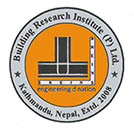
Today (NST)
Saturday, Apr 26, 2025
Smart Search
Please post in your Technical Queries, Comments & Suggestions to Contact us......
Advertisement

For Advertisement
|
|
| Subscribe to BREINS Sci-Tech |
| Visit this group |

High Performance Concrete (HPC)
Action of Superplasticizers
With addition of water in a concrete mix, Portland Cement particles in a finely divided state have a tendency to flocculate showing high degree of cohesiveness. During the process, some quantity of added water gets entrapped inside these flocs thereby reducing the water available for the concrete mix. It reduces the fluidity of concrete mix.

(Fig-2 : Flocculation of Cement particles entrapping mixing water & dispersion of Cement particles with release of Entrapped water enhancing fluidity of mix after addition of Plasticizers )
When added in a mix, Plasticizers are adsorbed on the cement particles. The adsorption takes place at very early stage of hydration. The adsorbed molecules of Plasticizers are negatively charged; thereby creating repelling forces that break the weaker Vander Waal forces of attraction. The breakage of the attractive forces between cement particles result in well- dispersed system thereby releasing the entrapped water and get available to mix. Fluidity of mix gets improved with deflocculation of cement particles along-with release of entrapped water. In this way the workability of mix is enhanced for the given Water-Cement, W/C, ratio.
It has been seen from the above mechanism that the increase in workability of a mix is not due to any kind of chemical reaction of Plasticizers with a product of hydration; but is rather merely due to physical action; in which electrostatic action causes the repulsive forces between the flocculating cement particles thereby dispersing these particles.
The electrostatic repulsion of cement particles is determined through Zeta potential measurements. PC-based Superplasticizers produce negligible Zeta potential charge (0.3 to 5mV), with respect to that caused by SNF-based admixtures (23 to 28 mV), in aqueous suspensions of cement particles. It indicates that the Zeta potential of cement particles treated by PC appears to be much lower than those recorded in the presence of SNF. In particular, when 0.3% of PC by mass of cement was used, the cement particles appeared to be almost electrically neutral.
Basically the dispersion mechanism of PC based Superplasticizers is mainly due to Steric hindrance effect. The graft chains of the polymer molecules on the surface of cement would hinder by themselves from flocculating into large and irregular agglomerates of cement particles. Steric hindrance effect stabilizes the cement particle capacity to separate and disperse thereby retaining the dispersed structure for the longer time. It gives concrete mix “Slump retention” for the longer time period.

(Fig-3 : Steric Hindrance Mechanism in PC based SuperPlasticizers resulting in longer slump retention )
It should also be mentioned that significant increase in strength of a mix could be obtained only if W/C ratio is reduced for a given workability after addition of Plasticizers/Superplasticizers. No such increase in strength could be obtained by merely adding Plasticizers and if water-cement ratio weren’t reduced. Plasticizers don’t cause direct increase in strength but is mainly due to reduction in W/C ratio. It is well known fact that decrease in W/C ratio causes increase in concrete’s strength with several other desirable properties.
High Early Strength
Plasticizers disperse the cement particles better that result in a greater surface area of cement exposed to hydration that provides concrete with higher early strength than the Plasticizer free concrete with same W/C ratio.
Set Retarders
Set Retarders are the admixtures which cause delay in setting of wet concrete mix. It basically slows down the process of hydration so that mixed concrete remain in plastic stage to be workable for longer time period. It also slows down the heat building process thereby reducing the thermal stresses. Setting time of concrete mix is increased by addition of Set Retarders.
Set Retarders Admixtures are normally useful in following conditions;
Prolonged concreting period
Concrete mix transportation
Ready mix concrete
Massive concrete structures
Hot weather concreting
High temperature concreting
Gypsum is the most commonly used Set Retarder but its use should be carried out cautiously. Amount of gypsum to be added should be determined carefully for a given concreting job. Excess amount of gypsum retards the setting time indefinitely and also chances of Plastic Shrinkage would be more. Other Set Retarding admixtures include, Sugar, Starches, Cellulose Products, soluble zinc salts, soluble borates & others.
Addition of common sugar at normal temperature in an amount of 0.05 % to 0.20 % by weight of cement will delay the setting time by around 4 to 72 hours depending upon the type of cement. Higher dose of sugar than this virtually prevents the setting of cement.
Use of Set Retarding admixtures somewhat reduces the early strength of concrete, but later the rate of development of strength is higher; so that long term strength is not much different to that of admixture free concrete. Nowadays, admixtures possessing both the Set Retarding & Water Reducing Properties are available.
Accelerators
Accelerating admixtures that accelerate set or strength at early age when added in a concrete mix are of two types;
Set Accelerators (Quick Set)
Strength Accelerators (Early Strength)
Both of the above are Accelerating Admixtures. But use of one may adversely or positively affect other Admixture’s property. For example, Set Accelerators also may enhance early strength.
Set Accelerators (Quick Set)
Set accelerators reduce the setting time of cement thereby reduce the period over which concrete mix is workable; leading to early stiffening of the mix. Sodium Carbonate, Washing Soda is an example of Set Accelerators, Quick Set, which is used to promote a flash set. Quick Set is normally useful for urgent repair works or in shotcreting. However, it adversely affects the strength.
Aluminium Chloride, Potassium Carbonate, Sodium Fluoride, Sodium Aluminate and Ferric Salts are the examples of Set Accelerators. Use of such ingredients should be carried out after proper study only.
Rapid Set Accelerators are also available, with a final setting time in between 3 mins. to 12 mins. which could be used in emergency works in specialized conditions particularly in tunneling, mining and undersea concreting works.
Strength Accelerators
Strength Accelerators increase the rate of gain of early strength development of concrete. Calcium Chloride (CaCl2) is the most common one which primarily accelerates the early strength gain. However, setting time also gets reduced. It should be noted that though the rate of early strength gain is higher, strengths at later ages remain similar to or above the control mix. These accelerators are used for cold weather concreting, under-water concreting & in repair works where the concrete must be put into service at an early age.
Mode of action of Calcium Chloride is believed to be due to its catalytic action in the hydration of Tri-calcium Silicate (C3S) & Di-calcium Silicate (C2S). It should however not be used with high alumina cement.
Calcium Chloride content of 1% to 2% by weight of cement is normally sufficient. With addition of 2% anhydrous CaCl2 , stiffening rate of a mix comes down to one-third to that of admixture free mix. Quantity of CaCl2 could be increased but only after carrying out the test with actual cement that is to be used at site. With increase in its dose, it has been observed that both the initial and final setting times were accelerated also such concrete developed a higher strength art early stage than a mix without Accelerators. Overdose can cause flash set.
Use of CaCl2 reduces the alkalinity of the concrete hence harmful for the reinforced concrete construction with liable to corrosion of steel rebars in presence of CO2, moisture and oxygen. But same could be used in high dosages in Plain Cement Concrete. Chloride free Accelerators are also available.
Air Entrainers
Presence of air voids is inevitable in concrete. Inclusion of such air voids could either be due to insufficient compaction of concrete designated as Entrapped air or intentionally trapped air in the form of tiny voids called Entrained air.
Air Entrainers are the admixtures when added in concrete forms a millions of tiny non-coalescing air bubbles. Air bubbles thus formed are intentional ones and are called Entrained air. Such entrained air bubbles act as flexible ball bearings thereby modifying the property of plastic concrete in terms of workability, segregation, bleeding and finishing quality of concrete. Also, Air Entrained hardened concrete shows the good enhancement in resistant property to frost action in snow-fall region.
Tiny bubbles formed by the addition of Air Entrainers admixtures possess different configuration than that of the Entrapped air voids. Entrapped air voids may be of any shape and size generally following the path of aggregate-matrix interfaces; sizes of which could range from 10 microns to 1000 microns or even more and their distribution are not uniform within a concrete mass. Whereas, Entrained air voids of spherical shape are uniformly distributed with sizes ranging from 5 microns to 80 microns.
Entrapped air content decreases with increase in maximum coarse aggregate size. According to ACI 211.1-84, approximate Entrapped air content for nominal maximum size of aggregate of 10 mm is 3% and that for 40 mm is 1% only.
Major Effects of Entrained air in concrete
Increased resistance to freezing & thawing
Increased workability
Decrease in strength
Reduction in segregation & bleeding tendencies
Decrease in permeability
Reduction in unit weight
Usually, inclusion of Entrained air decreases the strength of concrete at given water-cement ratio but results in increased workability. If the process is applied properly, and by decreasing the water-cement ratio & sand content for a given workability, even concrete with no reduction in strength or even little gain in strength could be achieved.